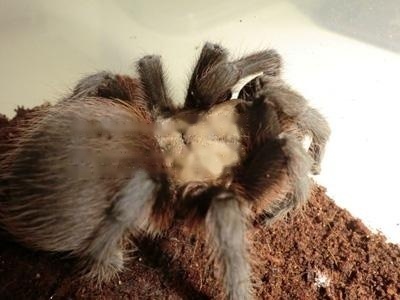
Texas Brown Tarantula
Adult body length is 13-14 cm, suitable temperature is 28-30 ℃, and suitable humidity is 65%. It is recommended to use moist peat, coconut brick and clay as the substrate. It tak
English name:Columbia Giant Red-legged spider
Origin: Central Colombia
Columbian RedfootSpider (Latin Scientific name: Megaphobema robustum) also known as the Colombian giant red-legged spider, an exciting classic from central Colombia Pet tarantula species. The huge size and bright red long hair make it a super handsome big hairy spider. It is a highly praised and sought after species among pet tarantula lovers.
Chinese name: Columbia Redfoot
Latin name: Megaphobema robustum
Kingdom: Animalia
Subfamily: Papillonia Section
Columbian RedfootSpiderThe adult body length is 22~25+cm foot span, and the fourth step foot of the adult individual is thicker than the other steps , making them look majestic. However, this is actually a highly nervous and kicking species. If they are touched during feeding, they will turn into a "zombie-like", which is very interesting.
Feeding points:
So the temperature should not be too high when raising in the south! Try to control it as much as possible. Of course, there are also very tenacious individuals.
An exciting classic pet Species of tarantulas. The huge size and bright red long hair make it a super handsome big hairspider. It is a highly praised and sought after species among pet tarantula lovers.
In adults, the fourth leg is thicker than the other legs, making them look imposing. However, this is actually a highly nervous and kicking species. If they are touched during feeding, they will turn into a "zombie-like", which is very interesting.
The juveniles are not as contrasting in color as the adults, and their fur is pink. It is also very difficult to breed them in captivity, and they produce relatively large individuals and very few offspring, which are the reasons for their low visibility and relatively high price in the pet market.
In their native areas, they burrow under rocks or tree roots, or occupy the nests of other small animals. Under captivity, it is recommended to provide a thicker substrate and a shelter. They need a dark place to ease their nervousness.
This species may be aggressive and prone to kicking and their stinging hairs are relatively powerful to humans. Therefore, if it is an individual above 6 cm, it is recommended that some enthusiasts who have experience in raising tarantulas try to raise it.